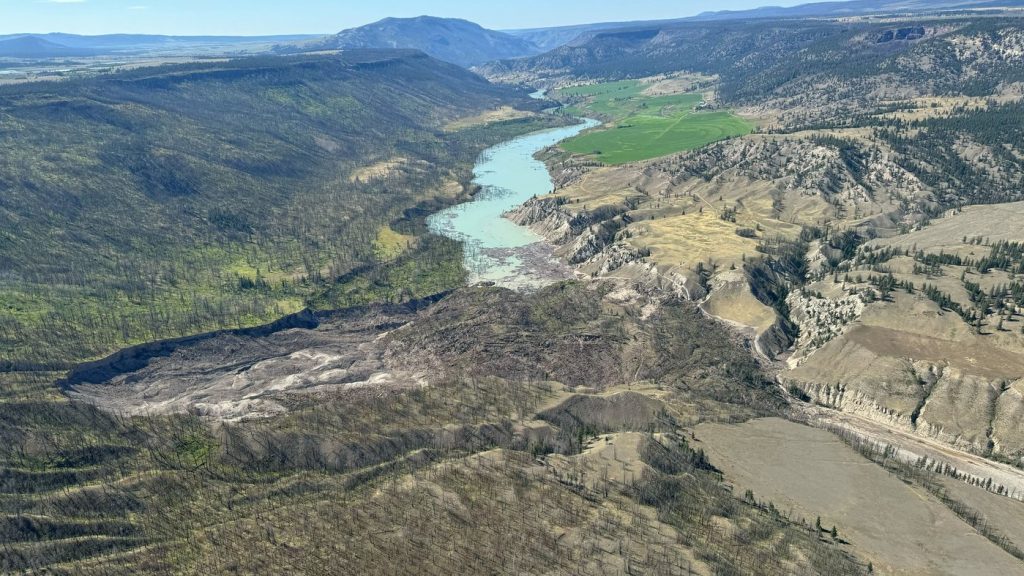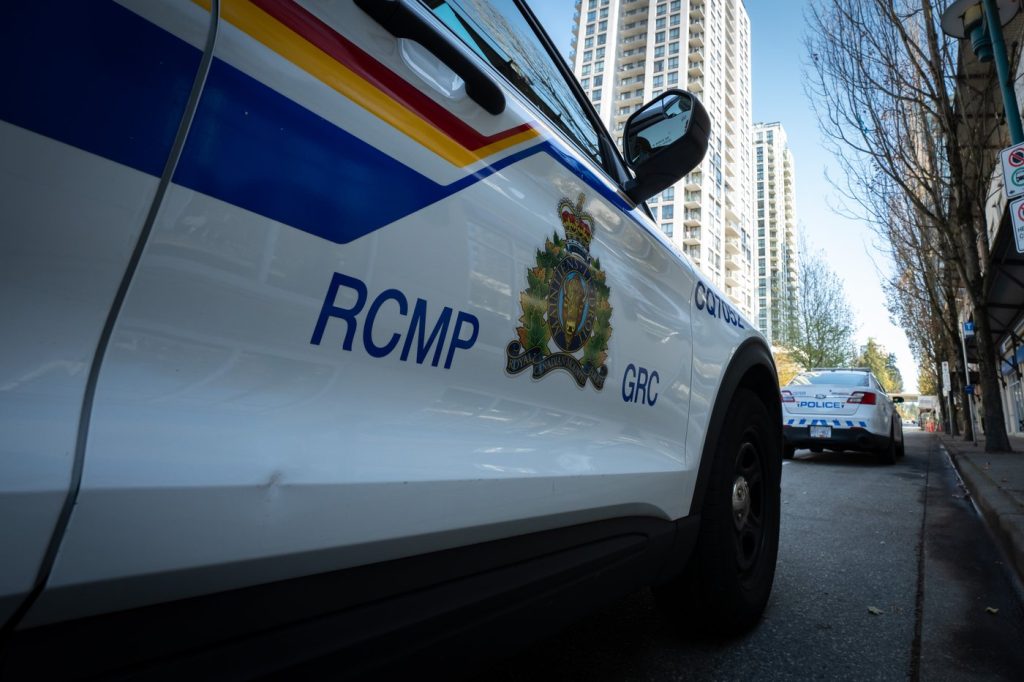Water from dam caused by landslide expected to reach Hope by midday Tuesday

Posted August 6, 2024 6:27 am.
Last Updated August 6, 2024 2:07 pm.
The B.C. government says it’s keeping a close eye on river flows as a “big pulse” of debris and sediment-laden water is expected to work its way down the Fraser River after a massive landslide dammed the Chilcotin River last week.
The province’s water management branch says the pulse of water after the dam breached Monday morning will make its way down the Fraser River toward Hope.
In a 10 a.m. update on Tuesday, the province says it expects the water flow to reach Hope by 12 p.m.
“There is significant woody debris being mobilized in the Chilcotin and Fraser rivers (downstream of Chilcotin), and the leading edge of the water does contain woody debris,” the province said in a statement.
CLICK HERE TO LISTEN TO 1130 NEWSRADIO VANCOUVER LIVE!Earlier Tuesday, the province explained that some places will see river levels swell to levels comparable to the spring runoff, flowing down toward Lillooet, then Boston Bar, and then onto Hope, which will see river levels increase about one metre.
Once the water enters the Fraser River, it will have more room to spread out and officials will be monitoring how and where debris from the water pulse ends up.
“Slope instabilities and other minor landslides have been noted in the upstream flooded area. There is an increased risk of additional landslides in the upstream flooded area,” the province said.
“Bank erosion has been observed along the Chilcotin River and is expected to continue during the event.”
Water flow near Lillooet is expected to peak mid-morning, the province explained.
Water and Resource Minister Nathan Cullen says experts from the province, First Nations, and Canada’s Fisheries Department “worked tirelessly” on the response to the slide, which entered a “new phase” once it breached the dam on Monday.
Cullen says they were preparing for “all possibilities,” and though the risks are decreasing after the dam breach, the possibility of more landslides due to unstable slopes remains “a real concern.”
Evacuation orders for residents in the Cariboo expanded Monday as water along the Chilcotin River began to pick up speed following the overflow that started early Monday.
The following orders are in place:
- Fraser River from the confluence of Churn Creek to Little Leon Creek: anywhere on the Fraser River and its banks from the confluence of Churn Creek and the Fraser River to Little Leon Creek, 25km south of Big Bar Ferry.
- Hanceville to the Gang Ranch Rd Bridge: anywhere on the rivers or along the banks of the Chilcotin River from Hanceville to the Fraser River, and the Fraser River from the Chilcotin River to the Gang Ranch Rd Bridge.
Those in these areas have been told to evacuate those areas immediately as flooding and debris pose a threat to human life.
Minister of Emergency Management and Climate Readiness Bowinn Ma said Tuesday afternoon the “risk of a worst-case scenario has drastically decreased, but we are not in the clear yet.”
Connie Chapman, the executive director of water management with the Ministry of Water, Land, and Resource Stewardship, says the ministry is continuing to monitor as water flows through the landslide dam. She says the reservoir that was formed behind the natural dam is currently decreasing at a rate of roughly 2.5 meters per hour.
“Current flyovers have indicated that the flows that are currently flowing through the Chilcotin River and into the Fraser River have a reduced amount of large woody debris, and the amount of debris that is actually being witnessed within the flow is sediment, which is a positive,” said Chapman.
Chapman says the province’s current prediction models show that a peak flow of water is expected to reach Hope at midnight Tuesday.
At peak, the water on the Fraser River at Hope is predicted to be 80 centimetres higher than typical.
Upstream in Lytton, Chapman says water will reach a peak height of 2.2 metres above its starting point Tuesday afternoon. Boston Bar is expected to see 1.8 metres of water above current levels by 7 p.m. Tuesday.
Chapman and Ma say safety is the province’s top priority as they monitor what is left of the flow.
“What we are really looking for is watching that pulse of water move through the system, looking for where debris is settling out, and understanding where the debris may have been. caught up and hung onto it, just for safety purposes.” said Chapman.
Ma thanked residents for continuing to keep clear of the rivers and urged people not to fly drones over the rivers.
You can watch CityNews 24/7 live or listen live to 1130 NewsRadio Vancouver to keep up to date with this story. You can also subscribe to breaking news alerts sent directly to your inbox.








